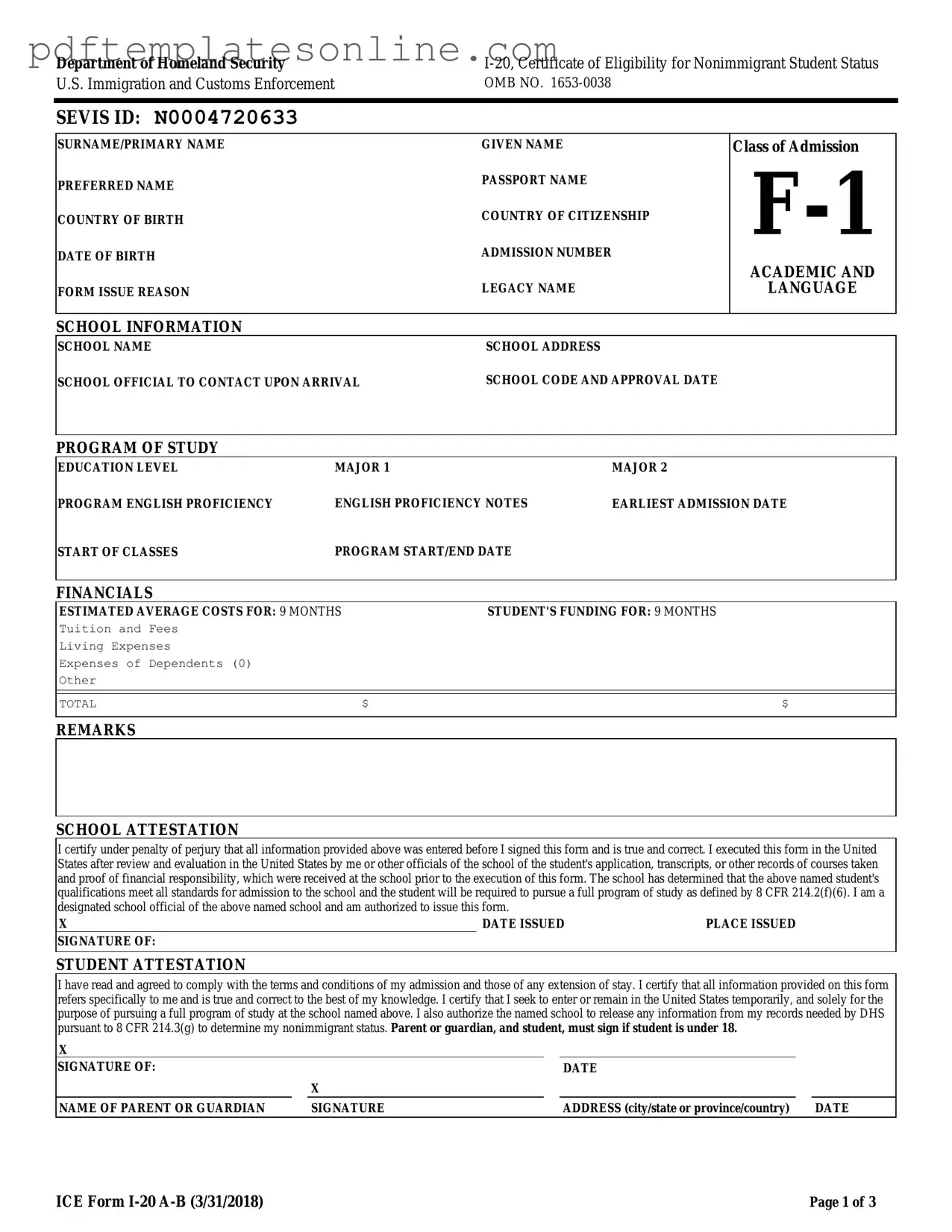Filling out the I-20 form is a crucial step for international students seeking to study in the United States. However, many individuals make common mistakes that can lead to delays or complications in their application process. Understanding these pitfalls can help ensure a smoother experience.
One frequent error is providing inaccurate personal information. Students often rush through this section, leading to typos in their names, dates of birth, or passport details. Such inaccuracies can cause significant issues when processing visas or entering the U.S. It is essential to double-check all entries against official documents to avoid these mistakes.
Another common mistake involves financial documentation. The I-20 form requires proof of sufficient funds to cover tuition and living expenses. Some students either underestimate their financial needs or fail to provide adequate documentation. This oversight can result in the denial of their visa application, as consular officers need to see clear evidence of financial support.
Students also often neglect to review the program dates listed on the I-20 form. If the program start and end dates are incorrect, it can affect the student’s visa status and their ability to enroll on time. It is critical to ensure that these dates align with the school's official academic calendar.
Additionally, many applicants overlook the signature requirements. The form requires signatures from both the student and a designated school official. Failing to provide these signatures can render the form invalid. It is advisable to carefully read the attestation section and ensure all necessary signatures are included before submission.
Finally, students sometimes forget to report changes in their circumstances to their designated school official. If a student changes their address, program, or financial situation, they must inform the DSO promptly. Not doing so can lead to complications with their immigration status and affect their ability to remain in the U.S.
By being aware of these common mistakes, students can take proactive steps to complete the I-20 form accurately. This diligence will help facilitate a smoother transition into their academic journey in the United States.
